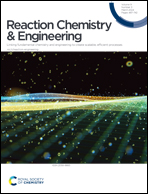Green synthesis of zinc nanoparticles with plant material and their potential application in bulk industrial production of mosquito-repellent antibacterial paint formulations
Abstract
Plants and humans share a profound connection that spans the entirety of history. Mosquitoes have long posed a threat, serving as vectors for numerous diseases in humans. While the market offers chemically prepared insect-repellent paints and coatings, their potential harm to both humans and the environment raises concerns. This research capitalizes on the insect-repellent properties inherent in plant materials, aiming to create a natural surface coating with insect-repellent capabilities. Moringa oleifera was employed in this study. A water extract of the plant was accurately prepared using the microwave-assisted extraction method. Zinc oxide nanoparticles (ZnONPs) derived from the Moringa oleifera plant underwent UV-vis spectroscopy, FTIR spectroscopy, and PSA. The UV-visible spectrum revealed absorption peaks for ZnO nanoparticles at 356 nm, while particle size analysis indicated variable sizes of ZnONPs (27 to 614 nm). FTIR analysis exhibited vibration peaks ranging from 3341 to 650 cm−1. The synthesized material was then incorporated into paint formulations to confer insect-repellent and antibacterial properties. Painted panels demonstrated significant antibacterial activity and displayed an inhibition zone measuring 16 mm for Escherichia coli and 15 mm for Staphylococcus aureus. A comprehensive assessment of the paint's whiteness index considered factors such as ΔL, Δa, Δb, and ΔE. The CMC ΔE value near 1.26 is near the acceptable range. The mosquito repellent efficacy of these paint formulations was tested against Aedes aegypti, revealing that formulations with plant extracts have a 50% effective period which is better than non-biocidal formulations (7% only).



 Please wait while we load your content...
Please wait while we load your content...